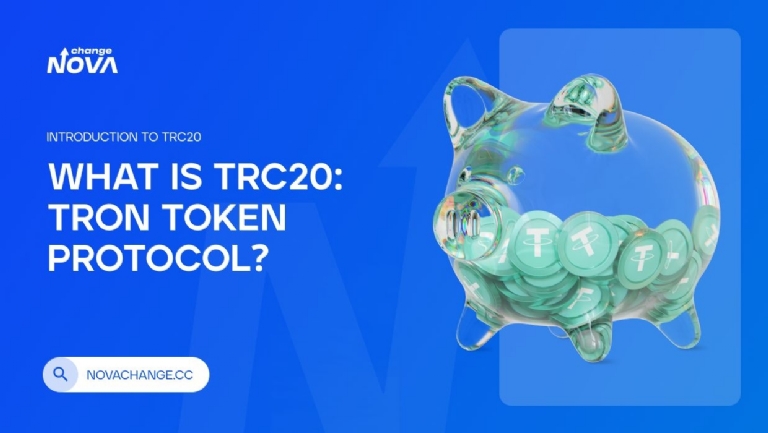

This token is always available on the NovaChange portal, but before carrying out any operation with it, it is neccesary to first understand all its characteristics, advantages and practical applications
Introduction to TRC20
TRON is one of the most famous blockchains, capable of processing up to 2 thousand transactions per second. The first Tether tokens of the TRC20 standard, used on the Tron network, were created in 2019. At that time, the world-famous Bitcoin and Ethereum blockchains still had some scalability problems, transactions were more expensive and there were significant delays during heavier periods of the system, but the TRC20 token did not suffer from these difficulties, as:
The development of the TRON blockchain allowed to achieve several milestones simultaneously:
Everything together contributed to the dissemination of TRC20 throughout the world. It is also important to note that the difference between the various forms of Tether is the blockchain on which they operate. The TRC20 token uses TRON, while the ERC20 token operates on Ethereum, but the BEP2 token uses Binance Chain.

Advantages and features of the TRC20
Tezer's main advantages include:
Furthermore, the presented token is famous due to the fact that it has a stable exchange rate from USDT to BRL (the asset has a low level of volatility) and that it is possible to exchange this token for Bitcoin, Ether and even different currency formats. USDT. The token's disadvantages include the fact that it is only possible to purchase it on an exchange or exchange after going through an identity verification process.
Application of TRC20 in practice
Before using Tezer, it is important to find out about the different token standards that exist. The problem is that many types of cryptocurrencies do not require the use of any specific virtual wallet, it is irrelevant for both the sender and the recipient which program was used to carry out the transactions, but things are different with the USDT TRC20 stablecoin.
In this situation, it is necessary to use only one wallet that supports this type of token to be able to store, receive and send it. If you try to send to an inappropriate wallet, the payment will not be processed and, in this situation, the token may even “disappear forever” without even being credited to the recipient's wallet.
Keep an important point in mind: addresses on the TRON network have a name that starts with the letters “Tx” – and this is the place where you should transfer TRC20 and nowhere else. These presented restrictions may cause some difficulties when using Tether, but, nevertheless, it is possible to find several modern services that work with a variety of USDT standards. It is also worth noting that this token can also be stored in other ways, including:
It is important to choose wallets that provide specific support for the TRON blockchain and its tokens, or that enable multi-currency storage to interact with multiple blockchains. Keep in mind that you can also find a custodial wallet that supports TRX, but at the same time does not process the TRC20 token. In this situation, if the account owner wants to receive Tether in it, the payment will be made, but it will be impossible to carry out transactions with tokens.
It is also worth taking into account the payment terms for commissions. Non-custodial wallets charge a certain amount for transactions made exclusively in TRX tokens, while a custodial wallet charges a fee for Tether transactions.
Many modern wallets support the option of synchronizing with decentralized applications. In general, there are now many different services for working with USDT TRC20 without restrictions.
Source: GMB